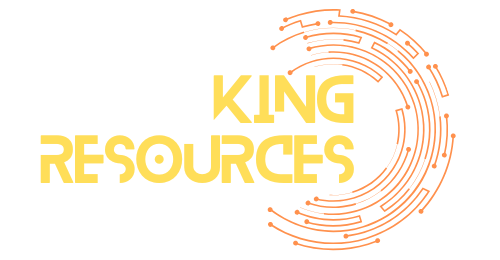Imagine sipping coffee on your second home’s porch, the sun rising over a serene landscape, while your main home’s mortgage payment feels like a distant memory. Owning a second home isn’t just a dream; it’s a savvy investment that can bring joy and financial benefits. But before you pack your bags and start shopping for beach houses, it’s crucial to understand the monthly payments that come with this exciting venture.
Table of Contents
ToggleUnderstanding Monthly Payments for a Second Home
Understanding monthly payments associated with a second home is crucial for prospective buyers. These payments often include principal, interest, taxes, and insurance.
What Are Monthly Payments?
Monthly payments refer to the recurring costs associated with homeownership. Buyers typically pay these amounts to mortgage lenders. Principal reduces the loan balance, while interest reflects the cost of borrowing money. Taxes contribute toward local government funding, and insurance protects against potential damages. It’s essential to calculate these amounts before committing to a second home. Buyers should also consider any homeowners’ association fees if applicable. Each element plays a significant role in overall financial planning.
Factors Influencing Monthly Payments
Several factors influence monthly payments for a second home. Loan amount significantly affects what buyers pay each month. Interest rates, which can fluctuate based on economic conditions, directly impact overall costs. Loan terms, such as the length of the mortgage, also alter payment amounts. Location matters; properties in high-demand areas typically incur higher taxes and insurance premiums. Additionally, down payment size directly correlates with monthly expenses. Each of these factors contributes to the final monthly payment, making it important for buyers to evaluate their financial situations carefully.
Financing Options for a Second Home
Understanding financing options for a second home helps buyers make informed decisions. Multiple types of loans cater to different needs and financial situations.
Conventional Loans
Conventional loans represent a popular choice for buyers seeking a second home. They typically require a down payment of 10% to 20% of the property’s value. Lenders evaluate credit scores, income, and assets in the approval process. Interest rates often depend on the borrower’s financial health, with competitive rates available for those with strong credit profiles. Loan terms usually vary, with 15 to 30 years being common. Budgeting for monthly payments includes principal, interest, taxes, and insurance.
FHA and VA Loans
FHA loans offer a unique option for second home buyers with lower credit scores. Buyers can secure these loans with a down payment as low as 3.5%. Qualification criteria include income limits and loan limits that vary by location. VA loans, available for eligible veterans and active-duty service members, provide favorable terms, such as no down payment and competitive interest rates. Both loan types require mortgage insurance, which adds to monthly payment calculations. Understanding these financing options can greatly impact overall investment strategies.
Calculating Your Monthly Payments
Understanding monthly payments is crucial for those considering a second home. These payments typically encompass several key components.
Principal and Interest
Principal refers to the actual loan amount borrowed, while interest is the cost of borrowing that money. Lenders often calculate interest rates based on factors such as creditworthiness and market conditions. A higher loan amount generally results in larger monthly payments. Evaluating different interest rates can significantly impact overall costs. For example, at a 4% interest rate for a $300,000 loan, monthly payments on principal and interest amount to roughly $1,432. These figures vary based on the loan term and specific agreements.
Property Taxes and Insurance
Property taxes and insurance add essential components to monthly payments. Local governments typically assess property taxes based on the home’s value. This assessment varies widely by location. For instance, homebuyers can expect property taxes to range from 0.5% to 2.5% of the home’s assessed value annually. Homeowners insurance also plays a significant role in monthly costs, protecting against potential hazards. On average, homeowners pay around $1,200 annually for insurance, translating to approximately $100 each month. Understanding these costs is vital for accurate monthly payment calculations.
The Importance of Budgeting
Budgeting plays a crucial role in managing the financial aspects of owning a second home. Accurately evaluating affordability helps ensure a sound investment.
Determining Your Affordability
Affordability hinges on several factors, including monthly income, existing debts, and the total monthly payments for the second home. Buyers often calculate a comfortable debt-to-income ratio, aiming for a figure below 36%. Evaluations also consider additional costs such as property taxes, insurance, and maintenance. Setting a clear budget based on these expenses allows potential owners to gauge how much home they can realistically afford without compromising their financial health. Using online calculators or consulting with financial advisors can clarify affordability limits.
Setting Aside Funds for Maintenance
Maintenance expenses require careful consideration, as they directly affect a homeowner’s budget. Setting aside 1% to 2% of the home’s value annually for upkeep is a common recommendation. Home repairs, landscaping, and seasonal tasks contribute to these costs. Unexpected repairs can arise, so having an emergency fund can mitigate financial stress. Planning for regular maintenance, such as HVAC servicing or roof inspections, helps preserve property value while avoiding larger, urgent expenses later. It’s essential to prioritize these funds to maintain a second home effectively.
Conclusion
Owning a second home can be a fulfilling venture that combines personal enjoyment with potential financial benefits. Understanding the monthly payments involved is crucial for making informed decisions. By evaluating financing options and accurately calculating costs, buyers can navigate the complexities of ownership with confidence.
Budgeting for not just the mortgage but also taxes, insurance, and maintenance ensures a sustainable investment. With careful planning and a clear understanding of financial responsibilities, prospective buyers can turn their dream of a second home into a rewarding reality.









